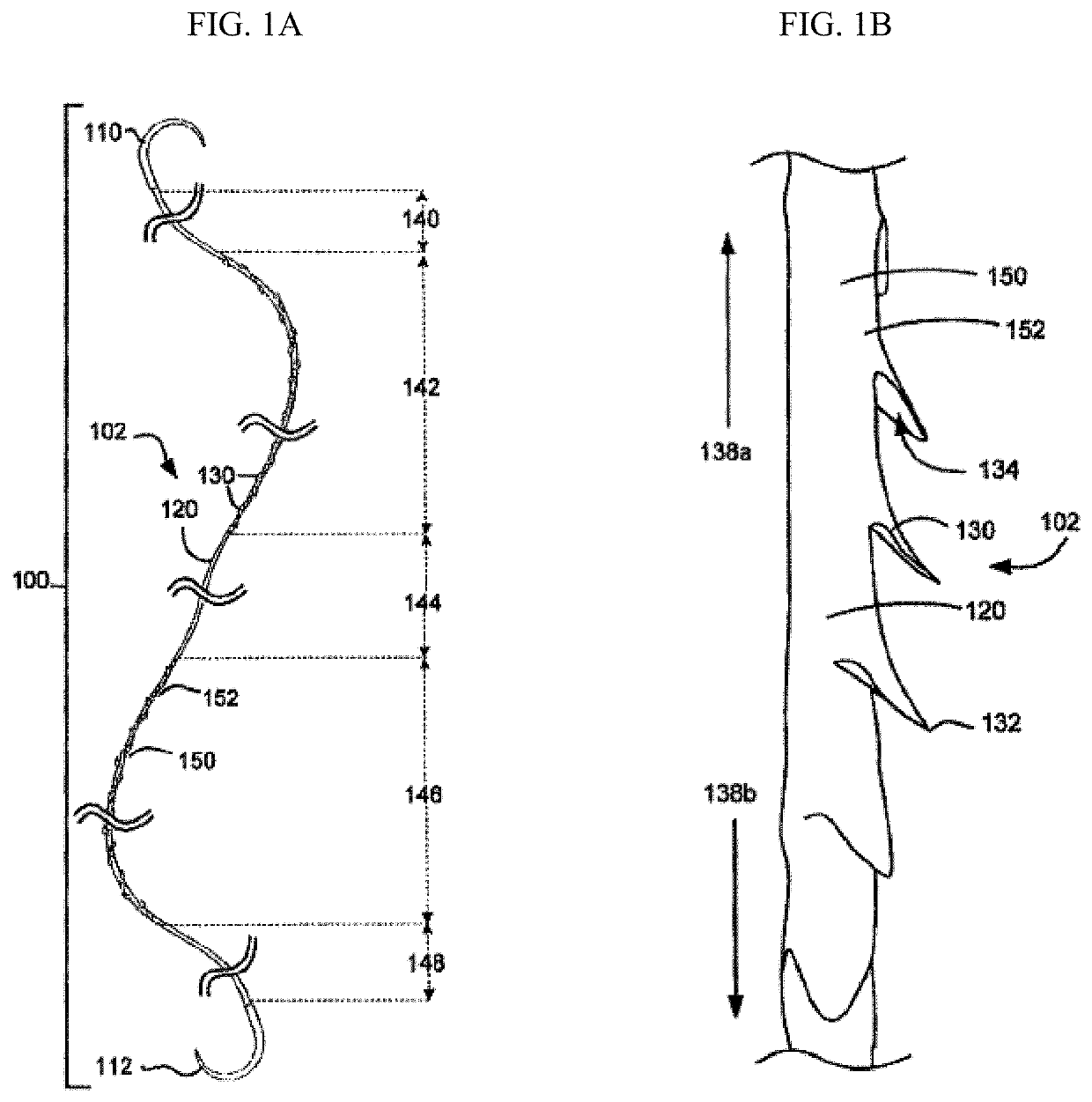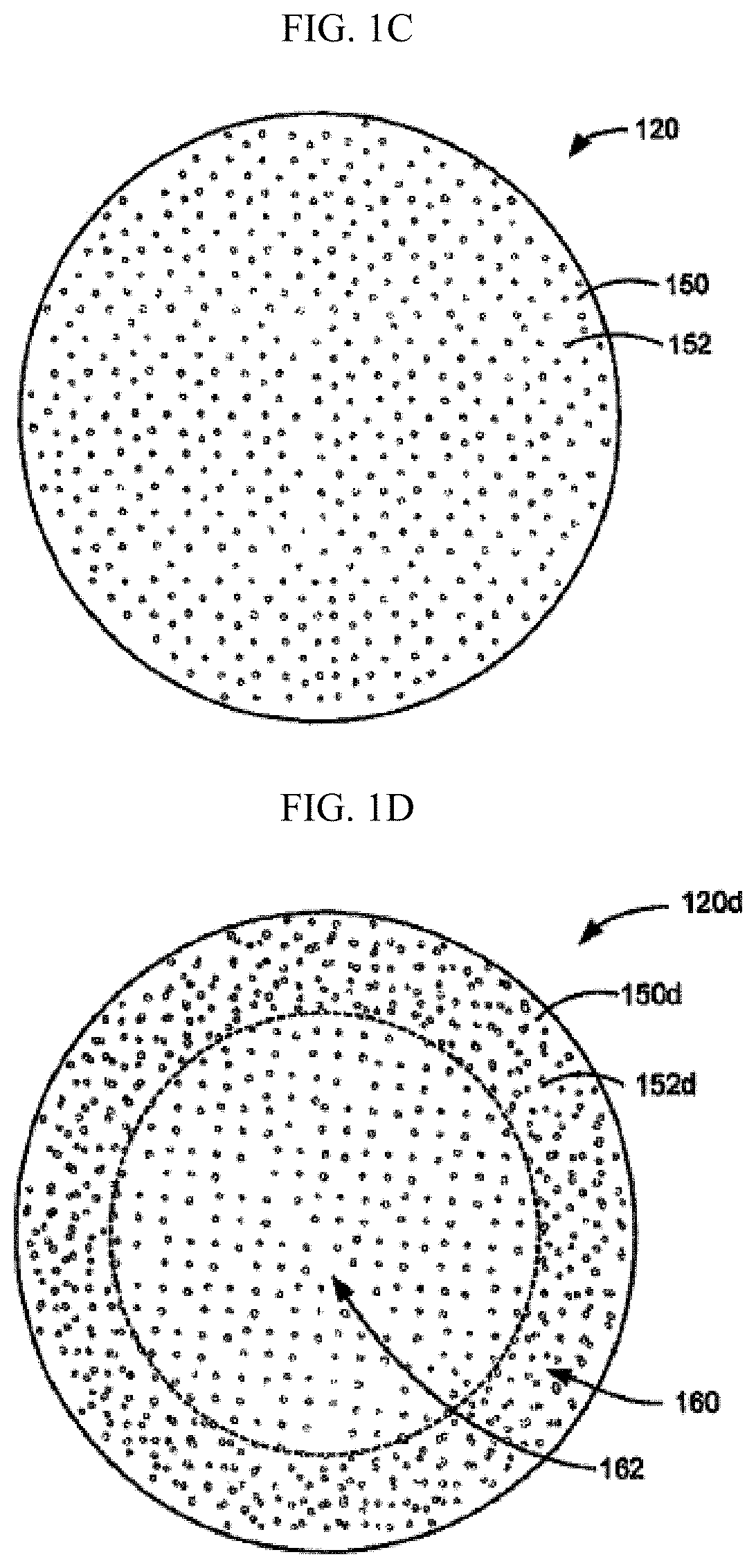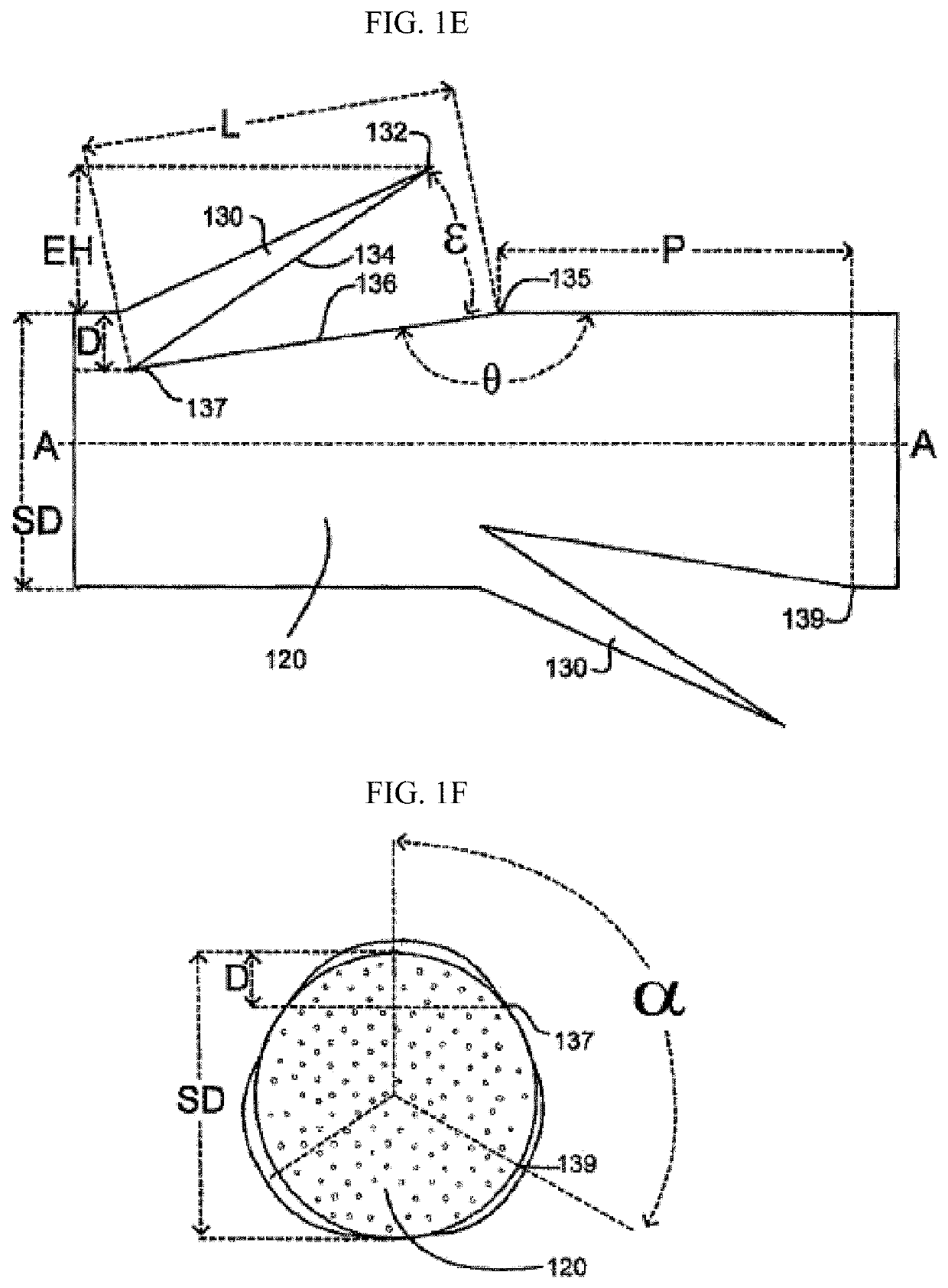Drug-eluting self-retaining sutures and methods relating thereto
a self-retaining suture and drug-eluting technology, applied in the field of self-retaining systems for surgical procedures, can solve the problems of increased risk of dehiscence or rupture at the surgical wound, laborious knot-tying, and time-consuming knot-tying
- Summary
- Abstract
- Description
- Claims
- Application Information
AI Technical Summary
Benefits of technology
Problems solved by technology
Method used
Image
Examples
Embodiment Construction
Definitions
[0057]Definitions of certain terms that may be used hereinafter include the following.
[0058]“Armed suture” refers to a suture having a suture needle on at least one suture deployment end.
[0059]“Bidirectional suture” refers to a self-retaining suture having retainers oriented in one direction at one end and retainers oriented in the other direction at the other end. A bidirectional suture is typically armed with a needle at each end of the suture thread. Many bidirectional sutures have a transition segment located between the two barb orientations.
[0060]“Braided suture” refers to a suture comprising a multifilamentary suture thread. The filaments in such suture threads are typically braided, twisted, or woven together.
[0061]“Degradable suture” (also referred to as “biodegradable suture” or “absorbable suture”) refers to a suture which, after introduction into a tissue is broken down and absorbed by the body. Typically, the degradation process is at least partially mediated...
PUM
| Property | Measurement | Unit |
|---|---|---|
| lengths | aaaaa | aaaaa |
| lengths | aaaaa | aaaaa |
| diameter | aaaaa | aaaaa |
Abstract
Description
Claims
Application Information
 Login to View More
Login to View More - R&D
- Intellectual Property
- Life Sciences
- Materials
- Tech Scout
- Unparalleled Data Quality
- Higher Quality Content
- 60% Fewer Hallucinations
Browse by: Latest US Patents, China's latest patents, Technical Efficacy Thesaurus, Application Domain, Technology Topic, Popular Technical Reports.
© 2025 PatSnap. All rights reserved.Legal|Privacy policy|Modern Slavery Act Transparency Statement|Sitemap|About US| Contact US: help@patsnap.com



